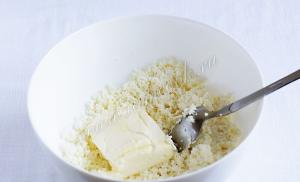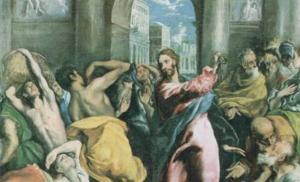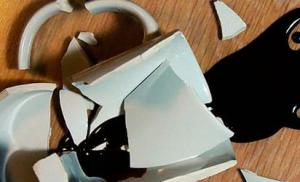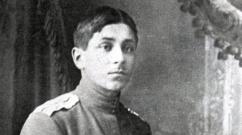Library of the journal mathematical morphology literary supplement. Mathematical morphology
Mathematical morphology.
Electronic mathematical and medical-biological journal.
Volume 10. Issue. 1. 2011.
UDC 616-001.8:615
INFLUENCE OF SUBSTANCE pQ1983 ON THE WORK OF AN ISOLATED FROG HEART
2011 Sosin D.V., Babkina Yu.I., Evseev A.V., Pravdivtsev V.A.
It has been established that the substance pQ1983 has a direct cardiodepressive effect, which is expressed in a decrease in the amplitude and time characteristics of the activity of the isolated frog heart. In in vitro experiments in the presence of the substance pQ1983, the myocardial response to the application of adrenaline is manifested by a twofold increase in the time of its activity while maintaining satisfactory indicators of cardiac activity compared to the work of the intact organ.
Key words: heart, hypoxia, antihypoxants, frog
Introduction. At present, the leading role of hypoxia in the occurrence and development of many pathological conditions is beyond doubt. A reduction in the intensity of metabolic processes in tissues under the influence of pharmacological substances has proven to be a very acceptable way to increase the body’s resistance to hypoxia. In particular, it was shown that a decrease in the metabolic demands of the heart muscle, ensuring a more economical use of oxygen by the tissue, can be achieved with the help of antihypoxants, of which aminothiol derivatives - gutimine, amtizol, etomerzol, etc. - were considered promising.
With the advent in recent years of metal-containing antioxidants, which are complex compounds of biometals with natural antioxidants, additional opportunities have opened up for the prevention and correction of hypoxic conditions. Substances of this group, synthesized on the basis of the Research Institute of Experimental Diagnostics and Therapy of Tumors of the Russian Oncology Research Center of the Russian Academy of Medical Sciences, showed good results in experiments on mice, rats, and cats. Moreover, the most distinct effect was demonstrated by the selenium-containing metal complex compound pQ1983.
Purpose of the work. Considering that most experiments analyzing the effect of new antihypoxants were carried out in vivo, it seemed interesting to test their protective properties at the organ level in vitro. As an object in our research, we chose an isolated frog heart, changes in the functioning of which were studied in order to parameterize the effectiveness of the substance pQ1983.
Methodology Experiments (21) were carried out on meadow winter frogs Rana temporaria. After isolating the heart, it was placed in a Petri dish with 20 ml of Ringer's solution for cold-blooded animals. In the experiments, we continuously measured the total resistance of the heart tissue - impedance, which, as we had previously established, varies depending on the functional status of the myocardium. During systole, the heart tissue becomes denser, and the impedance changes in one direction. During diastole, the heart tissue relaxes, and the impedance changes in the other direction.
The dynamic process of changes in the impedance of the heart muscle throughout the cardiac cycle was displayed on a computer screen, thus recording an impedance cardiogram (ICG) - a curve reflecting the mechanical activity of the isolated and unfixed frog heart. In parallel with ICG, the total electrical activity of the heart was recorded bipolarly - an ECG, reflecting the characteristics of the propagation of excitation throughout the heart muscle. The ECG curve was also displayed on the computer screen.
The experimental design was as follows. After isolating the heart and placing the necessary electrodes on it, its spontaneous activity was recorded for some time. Usually during this time the heart rate has stabilized at a certain level. In control experiments (10), after 15 minutes of observation, 3 drops of 0.1% adrenaline solution were applied to the beating heart, which caused significant positive changes in its work in terms of frequency, strength of contractions, and speed of excitation. In the experiments of the experimental series (11), after preparing a preparation of an isolated heart, after 5 minutes of its spontaneous work, 3 drops of 0.01% solution of the substance pQ1983 were injected into Ringer's solution. At 15 minutes, 3 drops of 0.1% adrenaline solution were applied to the beating heart.
A particular objective of the experiments was to determine the duration of operation of an isolated frog heart stimulated by adrenaline while it was in standard Ringer’s solution, as well as when the heart was in Ringer’s solution with the substance pQ1983 added to it.
Results. In Fig. Figure 1 presents data from 5 experiments in which the characteristics of the response of an isolated frog heart to the application of 0.1% adrenaline solution were assessed.
Rice. 1. Dynamics of changes in the frequency of the isolated frog heart after application of 0.1% adrenaline solution to it (according to 5 experiments).
Vertical – heart rate per minute. Horizontal - time
It can be seen that already 2 minutes after application, the frequency of cardiocycles increased almost 3 times (positive chronotropic effect). At the same time, subsequently the frequency of cardiac cycles gradually decreased over a period of time in the range from 18 to 32 minutes.
When averaging the data from all 10 control observations, the duration of heart function from the moment of adrenaline application. In Fig. 2. presents the results of an experiment in which adrenaline was injected into Ringer's solution before application to the heart solution of substance pQ1983. It can be seen that the process of introducing the substance (Fig. 2-2) did not pass without leaving a mark on the beating heart. We observe a slight prolongation of the time parameters of the cardiac cycle, as well as a decrease in their frequency.

Rice. 2. Changes in the frequency of the isolated frog heart after the introduction of pQ1983 into Ringer’s solution and application of adrenaline solution.
1 – initial work of the heart; 2 – heart function after injection of the substance pQ1983 into Ringer’s solution; 3 – 2 minutes after application of 0.1% adrenaline solution; 4 – 3 minutes after application of 0.1% adrenaline solution
The adrenaline reaction of the heart (Fig. 2-3, 4) was typical. This reaction contains positive inotropic, tonotropic, chronotropic and dromotropic effects.
In Fig. 3 (continuation of the experiment, the beginning of which is presented in Fig. 2) – we observe significant changes in the work of the heart by 20 minutes after the application of adrenaline. Distinct - a decrease in the amplitude of the mechanical work of the heart, prolongation of the cardiac cycle, deterioration until complete stop was 27±3 minutes. conductivity of excitation (extension of the ST segment of the ECG), pronounced changes in the R wave.

Rice. 3. Continuation of the experiment.
Over a period of time in the range of 30-60 minutes, we note a further slowdown in cardiac activity and a weakening of the mechanical activity of the ventricular myocardium. Judging by the ECG, the work of the heart ventricle in this situation is determined by the 2nd order pacemaker, located in the atrioventricular funnel of the conduction system of the frog’s heart. We found cardiac arrest in the experiment at 70 minutes after application of 3 drops of 0.1% adrenaline solution to the heart. On average, based on the results of 11 experiments, the work time of the heart stimulated by adrenaline in Ringer’s solution with the substance pQ1983 was 60 ± 12 minutes.
Conclusion. Based on the data presented, we can say that the substance pQ1983 has a direct cardiodepressive effect. There is information in the literature about the ability of metabolic-type antihypoxants to have a depressing effect on cardiac activity. It is no coincidence that in patients receiving amtizol, during the first three days of treatment, against the background of developing bradycardia, blood pressure noticeably decreases. It is known that the cardiodepressive effect of antihypoxants has found application in clinical practice, making it possible to increase the effectiveness of the treatment of cardiac arrhythmias, arrhythmogenic collapse, and cardiogenic shock.
As our own observations showed, after adding the substance pQ1983 to Ringer’s solution against the background of adrenaline load, the electrical and mechanical activity of the myocardium was significantly prolonged (without the substance – 27±3 min, with the substance – 60±12 min) while maintaining satisfactory amplitude and frequency activity indicators heart, comparable to the performance characteristics of an intact organ. Note that against the background of the action of the substance pQ1983, a change in the pacemaker was observed in 4 experiments, which was not noted in the control series of experiments. The change in pacemaker was confirmed by the disappearance of the P wave on the ECG, a slowdown in the frequency of ventricular complexes, and a change in the configuration of the QRS complex. The absence of a presystolic wave was noted on the impedascardiogram. The transition to atrioventricular rhythm apparently occurred due to an increase in the severity of hypoxia of myocardial tissue, which, first of all, affected the state of the sinus node cells, which were especially sensitive to oxygen deficiency. As follows from the curves presented in Fig. 3, such changes usually occurred by the 30th–40th minutes of the experiment, which, in our opinion, was a clear manifestation of the metabolic effect of the studied substance, which optimizes heart function under conditions of increasing hypoxia.
Conclusions
1. The substance pQ1983 has a direct cardiodepressive effect, which is expressed in a decrease in the amplitude and time characteristics of the activity of the isolated frog heart.
2. In the presence of the substance pQ1983, the myocardial response to the application of adrenaline is manifested by a twofold increase in the time of its activity while maintaining satisfactory indicators of cardiac activity compared to the work of the intact organ.
3. In vitro experiments confirmed the presence of metabolic effects of the new selenium-containing metal complex antihypoxant pQ1983 on the myocardium.
Literature
Averbakh M.S., Berezina M.P., Vasilevskaya N.E. et al. Large workshop on human and animal physiology. – M.: Soviet Science, 1954. – 606 p.
Hypoxia. Adaptation, pathogenesis, clinic / Responsible. ed. Yu.L. Shevchenko. – St. Petersburg: Elbi-SPb LLC, 2000. – 384 p.
Evseev A.V., Evseeva M.A., Pravdivtsev V.A., Parfenov E.A. Metal complex compounds in the prevention of acute hypoxic conditions // Proc. report XXI Congress of the Physiological Society named after. I.P. Pavlova, 19-25 September. 2010, Kaluga. – Moscow-Kaluga, 2010. – P. 200.
Zarubina I.V., Shabanov P.D. Molecular pharmacology of antihypoxants. – St. Petersburg: LLC “Izd. N-L", 2004. – 368 p.
Parfenov E.A., Smirnov L.D. Pharmacological potential of coumarin-based antioxidants. Review // Pharmaceutical Chemistry. magazine – 1988. – T.22. – pp. 1438-1448.
Parfenov E.A., Smirnov L.D., Dyumayev K.M. Strategic directions for the medical use of antioxidants // Man and Medicine: Proc. report IX Ros. national congr. – M., 2002. – P. 765.
Ryabov G.A. Hypoxia of critical conditions. – M., 1998. – 288 p.
Semigolovsky N.Yu., Shperling K.N., Nefedov R.B. Comparative assessment of the effectiveness of nine antihypoxants in patients with acute myocardial infarction // Antihypoxants and actoprotectors: results and prospects. Mat. Ross. scientific conf. – St. Petersburg, 1994. – Issue. 2. – P. 133.
Shabanov P.D. Metabolic correctors of hypoxia. – St. Petersburg: Inform-Novigator, 2010. – 912. p.
Shabanov P.D. Hypoxia and antihypoxants // Vestnik Ros. military medical academy. – 2003. – No. 1(9). – pp. 111-121.
Smirnov A.V., Zarubina I.V., Kashina E.A., Krivoruchko B.I. Mechanisms of antihypoxic action of amthizole and bemythil during myocardial ischemia // Hypoxia Med. J. – 1998. – Vol.6, No. 2. – P. 64.
Sutton J.R., Coates G., Remmers J. Hypoxia. – Philadelphia: B. C. Decker, 1990. – 198 p.
Dyachkova G.I., Glazachev O.S., Dudnik E.N. Changes in the heart rate pattern under graduated hypoxic load depending on the initial level of resistance to hypoxia // Hyp. Med. J. – 2000. – Vol.8, No. 1-2. – P. 12-16.
INFLUENCE OF SUBSTANCE pQ1983 ON ISOLATED FROG HEART ACTIVITY
D. V. Sosin, Yu. I. Babkina, A. V. Yevseyev, V. A. Pravdivtsev
Was found that the substance pQ1983 demonstrates a direct cardiodepressive action expressed in decrease of amplitude and frequency parameters of an isolated frog heart activity. In vitro the substance prolongs twice a period of heart contraction in the presence of adrenaline in comparison with intact organ.
Key wards: heart, hypoxia, antihypoxants, frog
Department of Normal Physiology
State Educational Institution of Higher Professional Education "Smolensk State Medical Academy" of the Ministry of Health and Social Development of the Russian Federation
Mathematical morphology.
Electronic mathematical and medical-biological journal.
Volume 15. Issue. 2.201 6.
UDC 616-091
BBK 52.5
MEMORABLE DATES OF PATHOLOGISTS OF RUSSIA 2016
© 2016G.
ZubritskyA.
N.
Rembrandt Harmens van Rijn "Anatomy Lesson", 1632
Zubritsky A. N. Memorable dates of Russian pathologists in 2016.– Smolensk, 2016. – 101 p.
This e-book presents memorable dates of pathologists in 2016 with their profile portraits and photographs. This is the first time a book like this has been published. The publication is intended primarily for pathologists.
Zubritsky A.N.Memorable dates of Russian pathologists 2016.– Smolensk, 2016. – 101 p.
This electronic book presents the memorable dates of pathologists 2016 with their questionnaire portraits and photographs. The similar book is published for the first time. The publication is intended primarily for pathologists.
© A.N. Zubritsky, 2016
© A.N.Zubritsky, 2016
FOREWORD
Anichkov Nikolay Milievich
Argunov Valery Arkhipovich
Birkun Alexey Alekseevich
Bulbakov Kuzma Sevastyanovich
Vasiliev Alexander Alexandrovich
Vinogradov Konstantin Nikolaevich
Garshin Vladimir Georgievich
Gedymin Lyudmila Evgenievna
Glazunov Mikhail Fedorovich
Dorosevich Alexander Evdokimovich
Erokhin Vladislav Vsevolodovich
Esipova Irina Konstantinovna
Zagorulko Alexander Kimovich
Zinoviev Anton Samuilovich
Ivanovskaya Tatyana Evgenevna
Kasabyan Stepan Sergeevich (Sarkisovich)
Kelina Inessa Nikolaevna
Kuklitsky Alexander Nikolaevich
Lapin Boris Arkadievich
Lyubimov Nikolay Matveevich
Makhulko-Gorbatsevich Grigory Stepanovich
Melnikov-Razvedenkov Nikolay Fedotovich
Molotkov Vladimir Gerasimovich
Nepryakhin Gavriil Georgievich
Nefedov Valery Petrovich
Novitsky Illarion Sergeevich
Pastukhov Leonid Yurievich
Petrov Semyon Venediktovich
Rapoport Yakov Lvovich
Rotin Daniil Leonidovich
Samoteikin Mikhail Alekseevich
Senyutkin Ivan Ivanovich
Skvortsov Mikhail Alexandrovich
Stepanov Sergey Alekseevich
Strukov Anatoly Ivanovich
Sutulov Yuri Lvovich
Talalaev Vladimir Timofeevich
Frank Georgy Avraamovich
Tsinzerling Vsevolod Dmitrievich
Chalisov Joseph Alexandrovich
Shakirova Asya Zakievna
Shkurupiy Vyacheslav Alekseevich
Yakovleva Lelita Andreevna
REFERENCES USED
APPLICATION. Sample biography questionnairecthat
PREFACE
For the first time, the proposed book, written in electronic format, is dedicated to the memorable dates of pathologists in 2016 with their profile portraits and photographs. In domestic and foreign literature, as far as we know, this is the second work compiled from biographies of pathologists, presented in an original compact questionnaire form with a layout of their memorable dates, after the publication of the book “Memorable Dates of Pathologists of Russia 2015” in the electronic mathematical and medical-biological journal "Mathematical Morphology" at the beginning of 2016.
The purpose of this work is to compile memorable dates of pathologists in 2016 with the study and systematization of their biographical information in the presented questionnaire form, which allows a wide range of readers to become more deeply acquainted and penetrate into the unknown pages of the life and creative work of biographers, and, thus, makes a significant contribution to the development history of pathological anatomy. In addition, structuring the material in this form makes it possible to popularize and promote it more widely among pathologists.
This book contains an annotation and preface in Russian and English, memorable dates and a list of biographers (43) in alphabetical order with photographs of personalities (56), a list of references (106 sources) and an appendix containing a sample questionnaire.
The profile portrait of pathologists is presented in accordance with the questionnaire I developed (see appendix) and was obtained primarily from personal questionnaires filled out by biographers at the personal request of the author, as well as other sources of biographical information, namely: scientific and popular publications, archives, various encyclopedias, domestic and foreign biographical dictionaries, medical necropolis, as well as other media, including Internet media. Along with archival and other materials, in some cases the memories of relatives and friends were used.
The questionnaire includes the following columns: full name of the biographer; profession; date and place of birth; Full name of mother and father, including mother's maiden name; marital status (single, unmarried, married, divorced, widower, widower) indicating the full name of the spouse; children with their names listed by seniority, if any; education – dates, diplomas; career – dates, positions; achievements and awards; scientific interests; publications indicating their number; membership; motto (creed); distinctive feature; interests, hobbies; publications about the biographer – source, year, volume, number, pages; address, in case of death, indicating the date, month, year, original cause of death and place of burial. In this regard, the concept of “personal portrait of a pathologist” was introduced. Thanks to this approach, objective and reliable profiles of pathologists were obtained.
However, it was not always possible to find information in all fields of the questionnaire. In such cases, empty columns had to be skipped. In addition, certain difficulties in writing the book lay in the decreased activity and reluctance of pathologists themselves to participate in this matter. However, despite the difficulties, the work was successfully completed.
It should be noted that the book is not flawless. Therefore, I apologize to biographers and readers for possible typos, errors in design, inaccuracies or omissions of any columns due to the lack of information on them in certain open sources, independent of the author, and I want to express the hope that they are few in number and not will significantly affect the impression of the book as a whole.
The book is intended for pathologists, but will be useful for a wide range of doctors of various specialties and, in general, everyone who is interested in and deals with this problem.
The publication contains 1 photograph on the reverse side of the title page with her signature, 1 photograph of the author, 56 photographs of biographers, 106 literary sources and 1 appendix. 
Author -
AlexanderNikolaevichZubritsky
FOREWORD
For the first time proposed a book written in an electronic format is dedicated to memorable dates of pathologists 2016 with their personal portraits and photographs. In the domestic and foreign literature, as far as is known, it is the second work composed of pathologists biographies, presented in the original compact questionnaire form with the layout of their memorable dates, following the publication of the book “Memorable dates of Russian pathologists 2015” in the electronic mathematical and biomedical journal "Mathematical Morphology" at the beginning of 2016.
The aim of this work is a compilation of memorable dates pathologists in 2016 with the study and systematization of their biographical data are submitted in the questionnaire form, allowing a wide range of readers to explore and penetrate deeper into the unknown pages of life and creative activity of biographists and thus makes a significant contribution to the development of history of pathological anatomy. In addition, the structuring of the material in this way allows it to popularize and promote the wider among pathologists.
This book contains an annotation and foreword in Russian and English languages, the list of memorable dates of biographists (43) alphabetically with photos of personalities (56), a bibliography (106 sources) and the appendix, which is a questionnaire sample.
Questionnaire portrait of pathologists is submitted in accordance with the questionnaire developed by me (see Appendix) and obtained mostly from personal questionnaires completed by biographists at the personal request of the author, as well as of other sources of biographical information, namely: of scientific and popular publications, archives, various encyclopedias, domestic and foreign biographical dictionaries, medical necropolis, as well as other mass media, including online media. Along with archival and other materials, in some cases used the memories of relatives and friends.
The questionnaire includes the following columns: full name of biographist; profession; date and place of birth; full name of mother and father, including the mother’s maiden name; marital status (single, unmarried, married, divorced, widower, widow), indicating full name of husband, or wife; children listing their names in order of seniority, if any; education – dates, diplomas; career – dates, positions; achievements and awards; scientific interests; publications indicating their number; memberships; motto (credo); distinctive feature interests, hobbies; publications about biographist – source, year, volume, number, pages; address, in the case of death, with the date, month, year, the initial cause of death and place of burial. In this regard, it was introduced the concept of “questionnaire portrait of a pathologist”. Through this approach have been the obtained objective and authoritative biographical portraits of pathologists.
However it was not always possible to find information for all the columns of the questionnaire. In such cases, the blanks rows had to pass. In addition, the difficulties in writing the book is to reduce activity and unwillingness to take part in this matter of pathologists themselves. Nevertheless, despite the difficulties, the work is successfully completed.
It should be noted that the book is not perfect. Therefore, I bring my apologies to biographists and readers for possible typos, errors, inaccuracies, or omissions of any columns is due to the lack of information on them in those or other open sources, independent of the author, and want to express the hope that they are few in number and will not impact significantly on the impression of the book as a whole.
The book is intended for pathologists, but will be useful for a wide range of doctors of various specialties and all those interested and engaged with this problem.
The author will be grateful to readers for their suggestions and comments. The publication contains 1 photo on the reverse of the title page with its signature, the author’s photo and 56 photos of biographists, 106 references and 1 appendix.
Theauthor -
AlexanderN.
Zubritsky
K 75-BIRTHDAY ANNIVERSARYCORRESPONDING MEMBER OF THE RAMSNIKOLAY MILEVICH ANICHKOV
Anichkov Nikolay Milievich
Pathologist.
Mother: Anichkova (Karpova) Zoya Yakovlevna, father: Anichkov Mily Nikolaevich.
Married. Spouse: Svetlana Ivanovna.
Children: Andrey.
Graduated from the 1st Leningrad Medical Institute with a degree in general medicine (1965) and full-time graduate school (1970); defense of a candidate's thesis on the topic "Morphogenesis of experimental pseudotuberculosis" (1972), doctoral dissertation on the topic "Tumors of the urothelium of the bladder, ureters and renal pelvis" (1982).
Junior Researcher, Department of Pathological Anatomy, Research Institute of Experimental Medicine, USSR Academy of Medical Sciences (1970); senior researcher, laboratory of pathomorphology, Research Institute of Surgical Tuberculosis of the Ministry of Health of the RSFSR (1971–73); Associate Professor (1982), Head (1984), Department of Pathological Anatomy, St. Petersburg State Medical Academy named after. I. I. Mechnikova (1974–2011); Dean, Faculty of Medicine, St. Petersburg State Medical Academy named after. I. I. Mechnikova (1985–87); Head, Joint Department of Pathological Anatomy, Northwestern State Medical University named after. I. I. Mechnikova (2012–).
Professor (1984); Corresponding Member of the Russian Academy of Medical Sciences (2002); Honored Scientist of the Russian Federation (2002); chief pathologist, Northwestern Federal District of the Russian Federation (2002); silver medal from the University of Parma, Italy (1992); medal of R. Virchow (Germany); diploma of the winner of the competition of diagnosticians-pathologists “Expert-Quiz” (Innsbruck, 1993); laureate of the Russian Government Prize in the field of education (2008); diploma of the Presidium of the Russian Academy of Medical Sciences “For fruitful work on the development of medical science and healthcare” (2011); commemorative medal of the Academic Council of the Military Medical Academy named after. S. M. Kirova (2013); memorial sign of St. Petersburg “In honor of the 70th anniversary of the liberation of Leningrad from the fascist blockade” (2014), etc. Chairman of the dissertation council of the university (2013–); head of the scientific and scientific-pedagogical school in the field of structural and functional organization, pathophysiology and pathomorphology of humans and animals (2013–); Corresponding Member of the Russian Academy of Sciences (2014); under his leadership and with his scientific consultation, 7 doctoral and 24 candidate dissertations were completed.
Scientific interests: Pathology of tumors (verification of markers of malignancy and tissue specificity of tumors, study of the pathogenesis of metastasis and the role of lymphangions in this process, improvement of morphological classifications of tumors, study of neuro-endocrine differentials in normal conditions and during tumor growth, etc.) and infectious diseases.
Member of the EOP Executive Committee (1989–93); founder (1992) and president of the Russian branch of MAP (1995–2003); member of the British branch of the IAP (1992), International Academy of Informatization (1992); honorary member of the Italian Society of Physicians and Naturalists (1992); Vice President of the ROP (2006); member of the presidiums of the board of St. Petersburg and ROP, MSAP, member of the editorial boards of the journals “Archive of Pathology”, “Clinical and Experimental Pathology”, “Preventive and Clinical Medicine”, “Pathology, Research and Practice” (1989–96), “System Analysis and management in biomedical systems" (2004–06), etc.
Motto: Loyalty to the Earth and legends - in gold letters on the azure ribbon of the Anichkov family coat of arms.
Distinctive feature: Wisdom.
Interests, hobbies: History of the 20th century (Russia, Europe).
About the Biographer: Who's Who in the World, Marquis, USA (1996–99); Who is who: Russian edition. Biographical innovation directory / 16th ed./. Editor-compiler V. A. Nikerov. – M, Astrea-center, 2013. – P.14; Who's who in pathological anatomy in Russia. Biographical reference book / Editor-compiler A. N. Zubritsky. – M.: Astrea-center, 2015. – P.19–21, etc.
Address: North-Western State Medical University named after. I. I. Mechnikova, Piskarevsky pr., 47, St. Petersburg, 195067; e-mail: [email protected]
Mathematical morphology.
Electronic mathematical and medical-biological journal.
Volume 8. Issue. 1. 2009.
UDC 372.8
Audiovisual teaching technologies in computer science lessons
2009 Maksimova N. A.
The article describes the main problems facing the existing education system in introducing modern teaching technologies into teaching practice. The structure of the modern teaching system proposed by the author is described, and the methodology for using audiovisual teaching technologies in the classroom is described. A meaningful description of the topics of the course “Audiovisual technologies for teaching computer science” is given and the projects that students complete while studying the topics of this course are described.
^ Keywords: audiovisual technologies for teaching computer science, the structure of a modern pedagogical system, multimedia teaching aids, interactive whiteboards
Changes in the socio-economic structure of society, transformation value orientations modern people contribute to the emergence in the field of education of ideas and concepts that reflect an understanding of the radical nature of the changes taking place. In the "Development Program teacher education Russia for 2001-2010" and in the Law of the Russian Federation "On Education" it is noted that in the conditions of modernization of education such professional functions as forecasting, design and organization of the content and procedural aspects of education are updated. The following problems facing the existing education system have been identified:
decline in the general and professional culture of the teacher;
lack of scientific and methodological foundations for diagnosing the quality of education;
lack of an effective mechanism for improving the quality of personnel training;
violation of the mechanism of continuity of forms and methods of teaching in educational institutions;
underdevelopment of the information culture of teachers in the education system.
In this regard, it is necessary to transfer student training to a qualitatively new level that meets modern requirements, taking into account the multi-level structure of higher education in Russia, increasing the fundamentality of education in combination with the introduction of modern educational technologies (audio and telecommunications) into the educational and professional activities of teachers. The use of audiovisual and telecommunication teaching technologies requires the teacher to have additional knowledge, skills and abilities in the creation and development of modern teaching tools. We can propose the following logical structure of the modern education system (Scheme 1).
Analyzing this scheme, it can be argued that modern teaching systems are mainly built on the basis of hypermedia technology. Hypermedia systems play a large role in higher education. Hypermedia as a cognitive tool should not be used as a list of instructions that are a source of information, but as a tool through which learning occurs. The use of hypermedia in education has revealed the main advantages of this system, which are developing as hardware and software products are improved. First of all, these advantages consist of the presence of branching points in the program, which allows students to regulate the process of perceiving information and either return to repeat the material or move on to any other branching point.
The more such points, the higher the interactivity of the program and its flexibility in the learning process. Another major advantage is audio support. educational information, dramatically increasing the efficiency of perception.
A promising direction in improving the training of students is the use of computer programs developed on the basis of multimedia technology, which today are increasingly used in the practice of domestic and foreign higher education. Currently, there are a sufficient number of computer programs (CP) developed to intensify the learning process. This becomes even more relevant with the advent of interactive teaching aids in schools.
The topic of interactive space today is becoming one of the most interesting in its problematic nature and the creation of new views on ordinary phenomena in the field of communication and communication. By interactive space we mean the presence of a special intensity of relationships that arise in those areas of activity, education and even everyday life where computers are used. This concept, as it were, generalizes the idea of the dynamics of relationships, their special qualitative difference from ordinary communication processes. At the same time, the interactive space also includes media technologies and modern teaching aids.
Today's media technologies force both the teacher and the student to switch to another language of communication - the language of audiovisual communications. Modern students already require that knowledge in many disciplines, even special ones, be presented in a “new language”, at the media level. It is obvious that in order to “immerse” oneself in a subject, the use of audiovisual and interactive technologies becomes simply necessary. During training sessions, with the help of a tool - AV technologies, it is possible not so much to increase the volume of educational information, but, at the same time, to delve deeper into the material and better understand it in the same fixed amount of time. Audiovisual technologies provide an opportunity to come close to changing the paradigm of education. Change the style and presentation of knowledge. Move away from traditional age-old forms of education and come to new ones. Change the learning process from the inside out. Now a new term has appeared - edutainment - acquiring knowledge with the help of such AV tools and technologies. One such tool is interactive whiteboards.
Interactive whiteboard - a convenient tool, the use of which largely depends on your needs. In each field of activity, working with an interactive whiteboard has its own characteristics. Interactive whiteboard in schools, universities and other educational institutions helps to include new multimedia teaching aids in the educational process, make classes more interesting, and captivate students.
An interactive whiteboard is a new generation multimedia tool, and who better than a computer science teacher can use new technologies in teaching. A computer science teacher, having mastered working with an interactive whiteboard, can act as a tutor for teaching the entire teaching staff of an educational institution. The use of an interactive whiteboard in computer science lessons will allow the teacher to teach at a fundamentally new quality level and take advantage of all the advantages of modern computer technologies. Leading interactive whiteboard developers highlight the following advantages of working with interactive whiteboards:
Enhances delivery of material, allowing teachers to work effectively with websites and other resources.
Provides more opportunities for interaction and discussion.
Makes classes interesting and exciting for teachers and students through varied and dynamic use of resources, develops motivation.
Encourages improvisation and flexibility by allowing teachers to draw and write on top of any application or Web resource.
Allows teachers to save and print images on the board, including any notes taken during class, without spending a lot of time and effort and making it easier to review what has been learned.
Allows teachers to share materials with each other.
Inspires teachers to search for new approaches to teaching and stimulates professional growth.
Makes classes interesting and develops motivation.
Provides more opportunities to participate in teamwork and develop personal and social skills.
Frees you from the hassle of writing with the ability to save and print everything that appears on the board.
Allows for a variety of learning styles, teachers can access a variety of resources, adapting to specific needs.
Students become more creative and confident.
They do not need a keyboard to operate this equipment, thus increasing the participation of primary school students or children with disabilities.
1 group. This includes issues related to the technical support of the educational process using interactive whiteboards and the motivation of teachers. We can say that everything is more or less fine here.
To the question “Does your school have an interactive system or blackboard?”: 60% of respondents answered positively.
To the question “Do you think that interactive systems/boards provide teachers with revolutionary new opportunities for organizing and conducting the teaching process?”: Yes - 50.00%, no - 25.00%, don’t know - 25.00%.
To the question “In your opinion, in teaching which academic disciplines is it most rational to use an interactive system/board?”: Russian language - 7%; literature - 4%; history, social studies - 5%; cultural studies - 1%; foreign language - 5%; geography - 13%; astronomy - 9%; physics - 13%; chemistry - 12%; biology - 12%; computer science - 8%; mathematics - 10%; primary school course subjects - 1%.
To the question “What possibilities of interactive systems/boards attract you most?”: new tools (which are not available in the traditionally used Power Point) for creating a teacher’s presentation and organizing the learning process. - 15%, libraries of video and audio layouts supplied as part of the system. - 28%, the possibility of organizing operational diagnostics (testing) of learning results. - 27%, another opportunity to involve students in the learning process, increasing their activity. - 30%.
The interest of teachers in using interactive whiteboards in the educational process is obvious.
Group 2 of questions concerns information support for the interactive educational process and problems associated with the use of ID. Only 7% of the surveyed teachers can offer their methodological developments for using an interactive system/board for posting on portals?
To the question “What type of resources do you use in your disciplines?”: textbooks - 17%, teaching aids - 34%, illustrative material - 32%, multimedia complexes - 17%.
To the question “Are the resources provided sufficient to support the lessons you teach?”: yes. - 26%, in general - no, but existing materials “cover” most topics. - 20%, in general no, but existing materials significantly help in explaining the material being studied. - 26%, no. - 28%.
To the question “What kind of problems did you have when mastering the interactive system/whiteboard?”: technical - installing the hardware complex. - 33%, mastering the software complex and attached libraries of the interactive system/whiteboard. - 15%, methodological - turning on the interactive system/ boards in teaching activities - 12%, information - lack of accompanying documentation - 34%, there were no problems with installation, development and implementation - 6%.
From the data presented, we can draw the following conclusion: interactive AV technologies are actively being introduced into teaching practice. In this case, the main problem of use is the problem of the technical plan (installation and maintenance) and methodological support of the disciplines. With the advent of interactive technologies, the requirements for a modern teacher have also changed - he must master all these technologies and use all the tools of AV tools in his classes.
Interactive tools (board) become a component that can gently regulate intra-system processes; stimulate a person to self-development by offering wide choices; organize the student to solve any problems, increase his motivation.
It is no secret that when supplying equipment to schools (interactive whiteboards), good software that can help conduct classes is not always installed. Therefore, it is necessary to train students to work in such environments, as well as teach them to design software environments for pedagogical purposes independently. To implement these tasks, a new discipline “Audiovisual teaching technologies” has appeared in the standard. The state standard requirements for this discipline are as follows: “Interactive learning technologies. Didactic principles of building audio, video and computer teaching aids. Typology of educational audio, video and computer aids and methods of their application. Bank of audio, video and computer educational materials.” While studying this discipline, students study the following topics:
Psychological and pedagogical foundations and didactic principles of using automated learning technologies (ATT) in the educational process and extracurricular activities
Didactic principles for constructing audio, video and computer teaching aids.
Typology of educational audio, video and computer aids and methods of their application.
Multimedia: creation, technology of application in the educational process. Preparation of multimedia educational materials using a computer.
Basics of working with the Internet. Educational resources of audiovisual teaching aids. Creation of educational electronic publications
Fundamentals of building an information and educational environment for an educational institution.
Using the portal system in the educational process
Video lectures.
Text lecture notes in the form of help-file materials.
Audiovisual slide show.
Test Shell
As an example, here are projects developed by students during 2007-2009
Project "Computer Peripheral Devices". Group 32 IIA. Compiled by: Bogonosova N., Mikhalenkova Y., Ustyan K., Davydova A. Supervisor: Maksimova N.A. The main screenshots are presented in the figures (Fig. 1, 2).
Project “Training program for working in MS Word MS Excel”. Compiled by: Miroshkina E., Romanova A., Gadyatskaya I., Cherey A. Group 32 IIA. Head Maksimova N.A. The main screenshots are presented in the figures (Fig. 3, 4).

Rice. 1. Home page of the training program

Rice. 2. Electronic textbook window

Rice. 3. Home page of the training program

Fig.4. Presentation window
Project “Electronic tutorial on Photoshop”. Group 31 IIA. Compiled by: Trofimova Anna, Markina Dina, Puchkova Daria, Moskaleva Anna. Head Maksimova N.A. The main screenshots are presented in the figures (Fig. 5, 6, 7).

Fig.5. Presentation window

Rice. 6. Home page of the training program

Rice. 7. Electronic textbook window
So, the use of technical audiovisual means and audiovisual and telecommunication teaching technologies requires the teacher to have additional knowledge, skills and abilities. A modern teacher must not only have an understanding of existing technical means and information technologies, but also master the methods of using them in teaching, have the skills and abilities to handle various technical means, and be able to create and use modern didactic materials in the classroom. Thus, future teacher must have a high degree of readiness to use existing and develop new modern teaching tools.
Literature
Barinova S.N. Automated training courses and their influence on the quality of the learning process / S.N. Barinova // Proceedings of the ITO conference. – 99. – http://ito.bitpro.ru//
Karpova I. P. Research and development of a knowledge control subsystem in distributed automated learning systems: Abstract of thesis. diss. ...cand. those. Sci. - Moscow, 2002.
Monakhov V.M. Designing the teacher’s author’s (own) methodological system / V.M. Monakhov, T.K. Smykovskaya // School technologies. – 2001. – No. 4. - P. 48-65.
Tyurina L. University textbook today and tomorrow / L. Tyurina // Higher education, 1998. - №1.
Yaroslavtseva E.I. Man in interactive space: the problem of commensurate – http://www.smartboard.ru/view_s321_mid_r321_1131613169.htm
http://portal.loiro.ru/votings/
Audio-visual technologies of the education to informatics
M aximova N. A.
In the article is described main problems, stands before existing system of the formation on introduction of modern technology education in pedagogical practical. It Is described by offered author structure systems of the education, is described methods of the use audio-visual technology education on lessons. It Is description of that course "Audio-visual technologies of the education to informatics" and described projects, which execute the students at study that given course.
Key words: audio-visual technologies of the education to informatics, structure pedagogical system, multimedia scholastic allowances, interactive school boards.
Department of Teaching Methods of Mathematics, Physics and Computer Science













